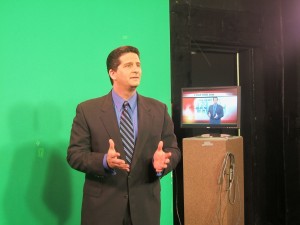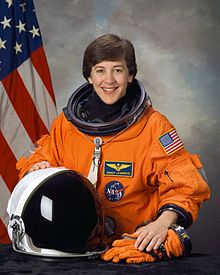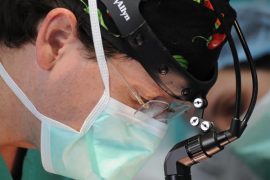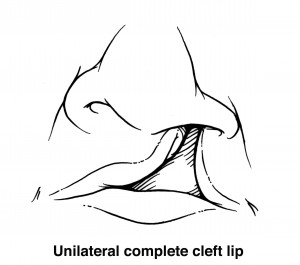I’ve known Mary Helen Dellinger my whole life. That’s because she’s my cousin, born a whole two months before I was (a fact she never let me forget when we were kids). Growing up in Virginia as we both did, it was darned near impossible to avoid a history lesson at every turn. And while I never really caught the bug, Mary Helen got it bad.
She’s been a history museum curator for 22 years now, the last year in a new position as curator for the City of Manassas Museum System, where she has overseen exhibits that include photographs of the Civil War and a collection that features a rare, surviving “John Brown Pike,” or spear, with which abolitionist Brown had intended to arm sympathizers in an aborted raid at Harper’s Ferry.
Yeah, this is cool stuff. And much to Mary Helen’s chagrin, her job includes quite a bit of math. She’s not shy about expressing her disdain for the Queen of Sciences, but like most grownups, she has learned to get along just fine.
Can you explain what you do for a living?
There are two major aspects to my with the Manassas Museum System. First, I am in charge of maintaining the Museum’s collection of objects. This includes meeting with prospective donors and accepting new donations for the collection, making sure the collection is properly stored and that a proper environment is maintained at all times (stable temperature and humidity at acceptable levels), and that adequate security is always in place. There is a lot of paperwork that goes along with this – Deed of Gift forms for donors, thank you letters, conservation reports, tax forms for those objects that are really valuable. Everything has to be photographed and entered into the Museum’s collection database. The entire collection numbers over 10,000 pieces – most of it in off site storage. Much of the work I described above is backlogged from the past eight years, so there is always something to keep me busy.
The second aspect of my job is running the Museum’s exhibition program. Exhibit schedules are usually created 2-3 years out. So right now, I am scheduling shows for 2015. For exhibits that we do “in-house” I select objects from our collection and negotiate loans from private collectors and other museums. I also have to write labels, work with exhibit designers and (if necessary) conservators, and do things like select paint colors, make object mounts, etc. – basically come up with the look and feel of the gallery space. The final step in all of this is the installation process – which is the most fun of all. It’s a very creative process and neat to see it all come together in the end. On occasion, I will rent a traveling exhibition that was put together by another museum. When I do that, it is just a matter of unpacking it and installing it.
When do you use basic math in your job? (And what kind of math is it?) If you can offer a very specific situation when math is important, that would be great.
Math is very important when creating any exhibition. First, I have to keep in mind what the square footage is in the gallery, and how much space the objects in the exhibits will take up. This includes spaces on the floor, inside cases, and on the walls. Large objects take up lots of floor space but also cover the wall space behind them. Cases have to hold the objects AND the labels. Framed pieces go on the walls. My design must include measurements of all the major components that include height, width and depth. This allows me to make sure everything will fit and yet allow space for visitors to move through the exhibit. During the design process we are constantly measuring, re-measuring and moving things around to get the most out of the space. For complicated exhibits we use floor plans and sketch in everything including measurements to help us understand the relationships between the pieces and if we are leaving enough space. You don’t want to get to installation and realize you don’t have enough room for a key piece of the exhibit. There is some geometry involved here (understanding angles and lines) but most of it is basic addition, subtraction, etc.
Secondly, each exhibit has an individual budget that I am responsible for creating at the outset of the project. I have to include designer time, materials, the cost of creating graphics, prepping the gallery space, etc. Each budget has a contingency built in for those unexpected things that inevitably crop up. I have to carefully track expenses to make sure I don’t overrun my budget.
In addition to the exhibitions, I am in charge of the annual budget for my part of the department. In fact, we are in the middle of creating the budget for FY 2014 right now. Using last years’ budget as a base, I have to project (using the aforementioned two-year exhibition schedule) how much money I am going to need in the next fiscal year. This requires me to know how much contractors charge per hour and how many hours I am going to need them, the cost of supplies, shipping schedules, etc. The math used here is addition/subtraction/multiplication/division – but it can be complicated because you are working with a lot of assumptions.
Do you use any technology (like calculators or computers) to help with this math? Why or why not?
I use calculators when doing the budget. For exhibit design, we use basic rulers and calculators. Nothing fancy.
How do you think math helps you do your job better?
Math enables me to design exhibits that are affordable, and work within the spaces that we have.
How comfortable with math do you feel? Does this math feel different to you? (In other words, is it easier to do this math at work or do you feel relatively comfortable with math all the time?)
I have NEVER been comfortable with math, not even today, 22 years into my career. Budgets, especially, make me nervous because if we don’t get it right, that will impact future expenditures and our ability to do other projects. So while the math I use in my job is familiar to me, because it is something I do every day, I don’t think I will ever be comfortable with it.
What kind of math did you take in high school? Did you like it/feel like you were good at it?
In high school I took Algebra I and II (barely passing both) and Geometry (did okay in this). I absolutely hated math, and only took it because I had to. Despite my best efforts, going to all the extra tutorials, studying every night, etc. I never could get it. The abstract concepts were not something I could ever wrap my mind around. Put me in a history class with definable dates, facts, and people to learn about and I was fine. I never had to “show my work” in history.
Did you have to learn new skills in order to do the math you use in your job? Or was it something that you could pick up using the skills you learned in school?
The math skills I learned in elementary/high school are enough for me to do my job. I have not had to learn anything new.

















